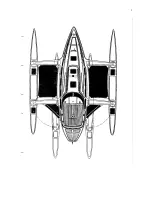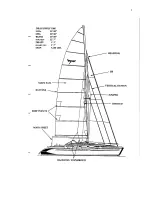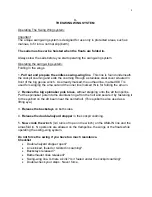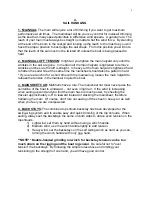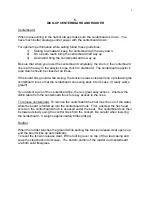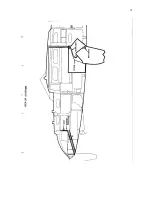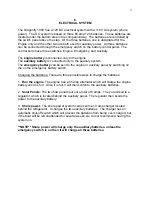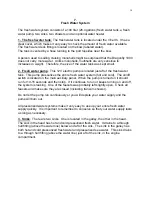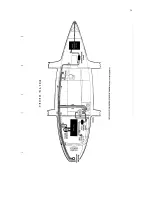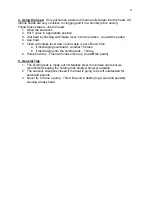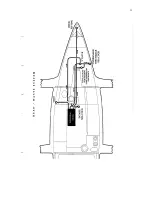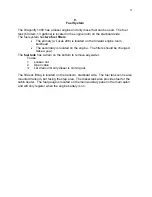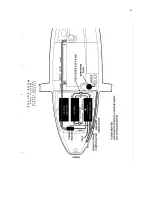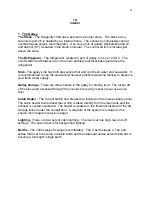
7
5. REEFING THE MAINSAIL:
In order to reef the main release the main halyard to
allow the sail to drop to the selected reef point, we recommend that you mark the main
halyard for the reef one and reef two positions. Then winch in the reef line until the
reef points are 10" above the boom. It is not necessary to bring the reefing points on
the sail any closer to the boom. Doing so will only put excess tension on the reefing
lines. The reefing lines automatically reef the luff first and then the leach.
6. TRIMMING THE GENOA
: The genoa is the easiest sail to trim. Under normal
conditions the genoa car on the cabin top should be positioned aft on the track. If the
slot between the main and jib closes, move the genoa car aft. If the slot opens, pull
the genoa car forward. The genoa cars are operated from the double-halyard stopper
rope clutches on the cabin top marked outhaul.
Reefing the Genoa:
•
Pull the genoa car forward so that when the genoa is reefed it will be in better
position for correct trim.
•
For reef 1, the genoa car is placed approximately in the middle of the track.
•
For reef 2, car is pulled almost all the way forward.
7. BARBERHAULER:
The barberhauler should not be used on the genoa when
sailing close-hauled. During all other points of sail you should treat the barberhauler
as you would a boom on a main. There are an infinite number of ways to trim the
genoa with the barberhauler. Enjoy!
8. HOISTING THE GENOA:
Before hoisting the genoa, make sure to roll some line
on the drum. Turn the headfoil clockwise until you have approx. 3 feet of line left in the
cockpit. This way you are able to unfurl genoa as soon as it is hoisted.
There is no genoa halyard on the Dragonfly 1000. You will find an S-hook attached to
a long white feeder line. This will be used to assist the spinnaker halyard in hoisting
the genoa and safely bringing the spinnaker halyard back down.
•
Attach the genoa to the sliding headfoil fitting.
•
Be sure to attach the release wire from the genoa onto the small wire strap on
the sliding headfoil fitting.
•
Attach the spinnaker halyard to the upper closed end of the S-hook.
•
Place the open end of the S-hook inside the open hole of the sliding headfoil
fitting.
•
Hoist the spinnaker halyard while someone feeds the genoa sail into its track.
•
When the halyard is all the way at the top of the headfoil, listen carefully for a
“click” letting you know the sliding headfoil fitting has just locked into place.
•
Release the spinnaker halyard and try to pull down on the genoa to make sure
the lock on top is actually in place.
•
Take the white feeder line and pull the S-hook attached to the spinnaker halyard
back down. (Sometimes you might have to step out a little to the side in order to
release the S-hook.)



